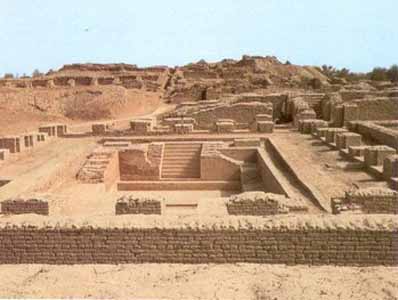Archaeologist divided Indian History in Five Phases :
Paleolithic Age(old stone age):
- 500000 BC to 8000 BC.
- Homo sapiens first appeared in the last of this phase and the Palaeolithic man belonged to the Negrito race.
- Sir Robert Bruce Foot discovered the first Palaeolithic stone tool in the Indian sub-continent near Madras in 1863 A.D. The discovery of Indian Pre-history got a boost after the Yale-Cambridge expedition in 1935 under De Terra and Patterson.
- No Family, Agriculture and fire.
- Paleolithic men used tools which are made up of Quartz (stone).
Mesolithic Age(middle stone age):
- 8000 BC to 6000 BC.
- In this age, climate changes brought about changes in the fauna and flora and made it possible for human beings to move to new areas.
- Temporary marriage and animal domestication.
- Worship of “Yoni”.
- Cave Paintings
- Animal headed human figures also appear.
- This is also the period when we find evidence of carefully burying the dead, which shows the beginning of belief in life after death.
Neolithic Age(New stone age):
- In the world context, the Neolithic age began around 9000 B.C. but in the Indian context it began in 7000 B.C. Mehrgarh in Baluchistan is the only site belonging to that period.
- Regular Neolithic attributes have
- Invention of wheel for pottery making and transportation
- Permanent marriages.
- Agriculture for subsistence.
Chalcolithic Age(copper age):
- The end of the Neolithic period saw the use of metals of which copper was the first. A culture based on the use of stone and copper arrived called the Chalcolithic phase meaning the stone-copper phase.
- Indus valley civilization or “Bronze Age” came under this time period.
Iron Age:
- 1000 BC to till now
Indus Valley Civilization:
| SITE | RIVER | EXCAVATION IN | EXCAVATOR | MAJOR FINDINGS |
| HARRAPA(Harappa is situated in Montogomery district of Punjab (Pakistan)) | RAVI | 1921 | DR SAHNI | – Single room barracks just below the walls of the citadels for the labourers and factory workers. – Discovery of a red sandstone male torso and Stone symbols of female genitals. |
| MOHENJODARO(it lies in Larkana district of Sind (Pakistan)) | INDUS | 1922 | RD BANERJEE | – A college, a multi-pillared assembly hall. – The Great Bath – A bronze dancing girl – A seal with a picture suggesting PashupatiMahadev. |
| CHANHUDARO | INDUS | 1931 | N.G MAJUMDAR | – inkpot, footprint of elephant and dog – only site without citadel(high ground) |
| LOTHAL | BHOGWA | 1954 | S.R. RAO | – The town planning in Lothal was different – from that of Harappa and Mohenjodaro. The city was divided into six sections – A ship designed on a seal. – A terracotta ship.
|
| ROPAR | SATLUZ | 1955 | Y.D SHARMA | – Buildings at Ropar were made mainly of stone and soil. – There is also an evidence of burying a dog below the human burial |
| DHOLAVIRA | 1968 | J.P JOSHI | – Divided into three parts: Lower, middle and upper. This site is made up of stones. | |
| Kalibangan | Ghaggar | – A ploughed field was the most important discovery of the early excavations – Burials in a rectangular grave and – _ Burials in a circular grave. | ||
| RAKHIGARHI | Saraswati | 1963 | – Terracotta wheels, toys ,pottery –Biggest Site of Indus Valley Civilization. |





